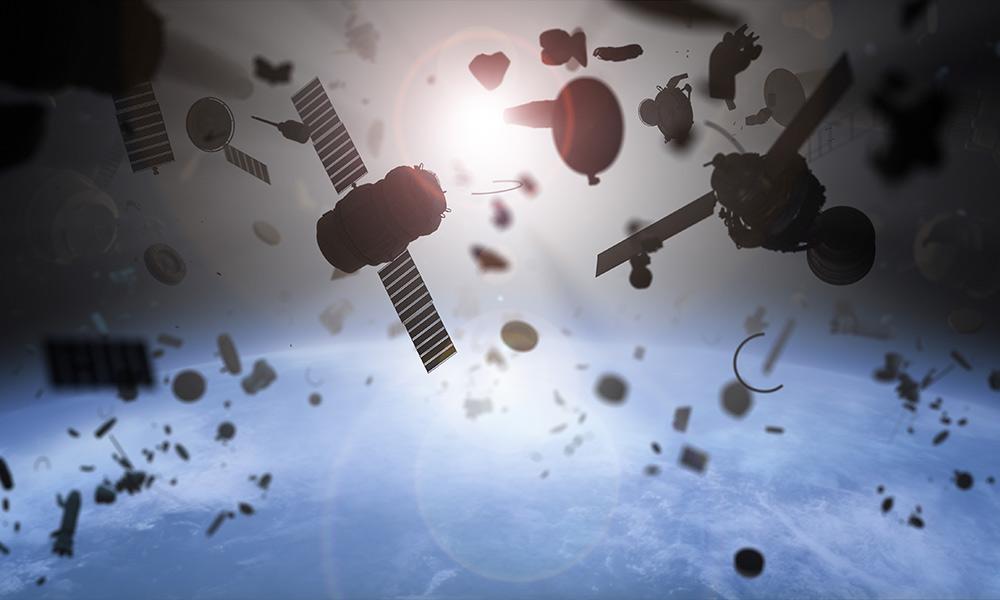A system has been designed to detect and estimate satellite manoeuvres more accurately
6/20/23
Researchers from the Universidad Carlos III de Madrid (UC3M), Polytechnic University of Milan and the company GMV have developed a new methodology for detecting and estimating satellite manoeuvres that improves the operation of the systems currently in use. This development, which is already being tested in operational environments, may help reduce the problem of space debris.

The number of satellites and fragments of space debris in Earth orbit currently amounts to around 30,000, according to the European Space Agency (ESA) and NASA catalogues, although researchers in this field estimate the real number to be around 100,000. Any object larger than approximately one centimetre can cause serious damage in the event of a collision. The “space debris” catalogues allow operational satellites to carry out manoeuvres to avoid possible dangers. However, these same movements that some satellites carry out automatically can pose a problem, because if they aren’t correctly detected and estimated they lead to catalogue degradation, which in turn increases the risk of collisions.
“The problem is that there are more and more satellite launches and many of them have autonomous manoeuvring capabilities, forming part of constellations of thousands of objects. Therefore, it is very interesting to be able to autonomously detect these manoeuvres in order to keep track of the real position of these satellites”, explains the researcher from UC3M’s Aerospace Engineering Department, Guillermo Escribano, one of the authors of this work recently published in the journal Acta Astronáutica.
What these researchers have developed is an algorithm that detects and characterises these satellite manoeuvres more effectively. To do this, they use data from sensors that track the movement of space objects (such as telescopes or radars, for example) and combine them with statistical information. “The basic idea is to process all of these measurements and correlate them with objects that we already have in the catalogue”, says Guillermo Escribano. “With this we are able to track them even if the satellites carry out manoeuvres we’re not aware of”, says another of the researchers, Manuel Sanjurjo Rivo, also from UC3M’s Aerospace Engineering Department.
This development could be used to improve the accuracy of space object tracking and cataloguing systems currently in use, which could help to reduce the space debris problem, according to the researchers. In fact, the algorithm has already been implemented by the company GMV, where other researchers who are authors of this paper work, to carry out tracking and validation campaigns for space object cataloguing systems.
In this context, it is essential not only to have an estimate of the position and speed of objects in space, but also to properly characterise the uncertainty of these estimates by considering the information provided by tracking sensors or even by the spacecraft operators themselves. "According to the type of information obtained from tracking sensors, whose data update times range around 12 hours, knowledge of the dynamics is essential. Manoeuvres therefore pose a challenge to current automated association and estimation systems due to a lack of reliable information about how the object moves," concludes Manuel Sanjurjo Rivo. Hence the importance of the developments proposed in the framework of this research.
Bibliographic references:
Porcelli, L. Pastor, A. Cano, A. Escribano, G. Sanjurjo-Rivo, M. Escobar, D. Di Lizia, P. (2022). Satellite maneuver detection and estimation with radar survey observations. Acta Astronautica, Volume 201, Pages 274-287, ISSN 0094-5765. https://doi.org/10.1016/j.actaastro.2022.08.021
Escribano, G., Sanjurjo-Rivo, M., Siminski, J. A., Pastor, A., & Escobar, D. (2022). Automatic maneuver detection and tracking of space objects in optical survey scenarios based on stochastic hybrid systems formulation. Advances in Space Research, 69(9), 3460-3477. https://doi.org/10.1016/j.asr.2022.02.034

